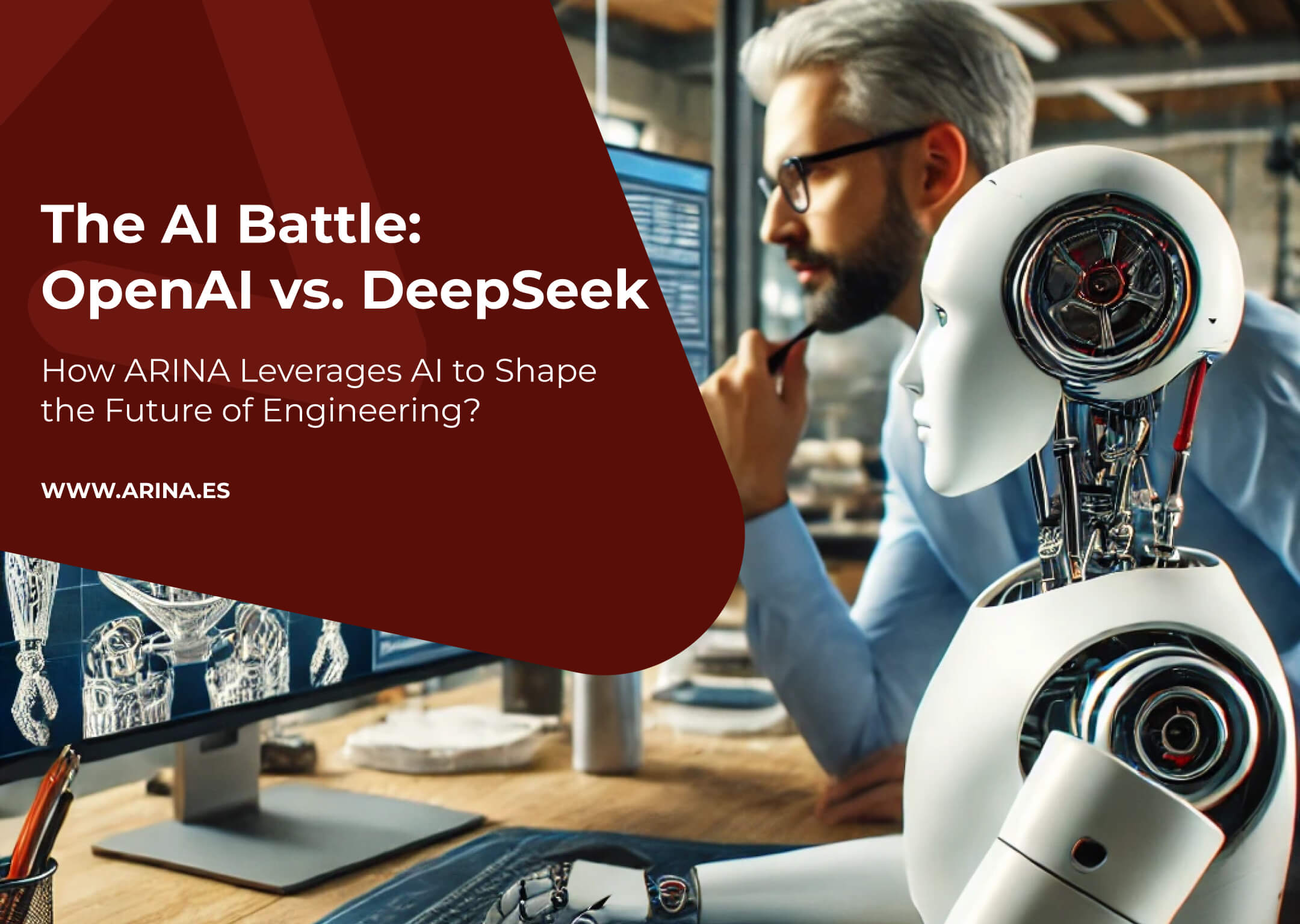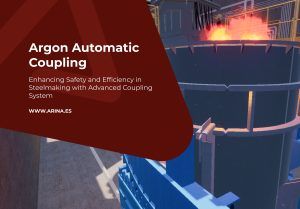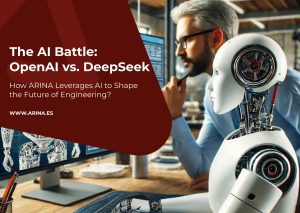
Introduction: The AI Race – A New Era for Engineering Innovation
The ongoing battle between AI giants like OpenAI (ChatGPT) and DeepSeek is more than just a rivalry for dominance in language models—it is shaping the future of engineering applications. As AI continues to evolve, the competition drives more sophisticated tools that enhance design, optimize materials, and improve sustainability in industrial and engineering sectors.
For engineers, this AI race is not a threat—it is an opportunity. Every advancement in AI-driven optimization, predictive modeling, and automation means that engineering workflows become more efficient, accurate, and sustainable. The better the AI models, the easier it becomes to apply finite element analysis (FEA), computational fluid dynamics (CFD), generative design, and predictive maintenance to real-world engineering challenges.
But the real question is: How do these competing AI models translate into practical benefits for engineering and industrial applications?
For decades, engineering software has relied on physical models based on fundamental scientific principles—Newtonian physics, thermodynamics, fluid dynamics, structural mechanics, and electromagnetism. These models describe real-world behavior using mathematical equations and are the backbone of Finite Element Analysis (FEA), Computational Fluid Dynamics (CFD), and Building Information Modeling (BIM).
However, with the rise of Artificial Intelligence (AI), a new approach is emerging: rather than relying solely on physics-based models, AI-driven engineering tools learn patterns from data to enhance decision-making and predictive accuracy.
Physical Models vs. AI Models: Understanding the Shift
🔹 Physics-Based Engineering Models
🔹 Based on first principles: Governing equations like Navier-Stokes for fluid flow, Hooke’s Law for material deformation, or Maxwell’s equations for electromagnetism. 🔹 Deterministic: Given the same input, they always yield the same result. 🔹 Require High Computational Power: Solving partial differential equations (PDEs) is computationally expensive, especially for large-scale simulations.
🔹 AI-Based Engineering Models
🔹 Data-driven: Instead of solving equations, AI models learn relationships from historical data and real-time sensor inputs. 🔹 Probabilistic: AI predictions incorporate uncertainty and adapt to new conditions. 🔹 Faster Approximation: AI can significantly speed up computations by learning to approximate complex physical processes.
So, does AI replace physical models?
Not exactly. In engineering, hybrid approaches are emerging—AI assists physical models by making faster predictions and optimizing complex parameters.
AI’s Black Box vs. Gray Box Models: How AI Learns
One key difference between traditional engineering and AI-driven methods is how they process information:
🔳 Black Box AI Models
These models, such as deep learning neural networks, generate results without explaining how they arrived at them. ✔️ Strengths: High accuracy in complex, nonlinear systems (e.g., fluid dynamics, material fatigue prediction). ❌ Weaknesses: Lack of transparency—engineers may not know why a model predicts a certain outcome.
Example: Deep Learning-Based Failure Prediction A neural network trained on historical failure data can predict when a machine part might fail, but it won’t explain the underlying physics of material degradation.
🔲 Gray Box AI Models
These combine physics-based rules with AI predictions, striking a balance between accuracy and interpretability. ✔️ Strengths: Uses physics-informed AI to improve accuracy while maintaining some transparency. ❌ Weaknesses: Requires domain expertise to build hybrid models.
Example: AI-Assisted CFD Simulations Instead of solving full Navier-Stokes equations for every time step, an AI model can predict flow behavior in simple cases while only using physics-based calculations for complex cases. This reduces computational load by up to 70%.
How ARINA Implements AI in Multidisciplinary Engineering
1️⃣ AI in Conceptual & Process Engineering
🔹 Generative Design: AI-driven software, such as Autodesk Generative Design and Siemens NX, helps us create multiple optimized design iterations based on performance criteria, cost efficiency, and material constraints.
🔹 Process Optimization: Using AI-based simulations, we analyze plant layouts, energy consumption, and material flows to minimize waste and improve process efficiency before construction even begins.
🔹 Predictive Modeling: AI helps simulate various process conditions to predict how systems will perform under different scenarios, reducing trial-and-error approaches and costly redesigns.
🔹 Software & AI Models:
✅ Autodesk Generative Design – AI-driven design exploration.
✅ Aspen HYSYS (by AspenTech) – AI-based process simulation.
✅ Siemens Simcenter STAR-CCM+ – AI-assisted computational fluid dynamics (CFD).
🔹 Showcase Example:
🔸 AI in Industrial Plant Layout Optimization
A steel manufacturing plant used Aspen HYSYS to simulate different process conditions before construction, optimizing fluid dynamics and energy efficiency. AI identified bottlenecks, reducing the plant’s energy consumption by 12%.
2️⃣ AI in Structural & Mechanical Engineering
🔹 Automated Load Calculations: AI algorithms enhance finite element analysis (FEA), reducing the time required for complex structural calculations while ensuring safety and efficiency.
🔹 Design Validation: AI-driven tools verify whether a structure meets standards and regulations, reducing human errors in compliance checks.
🔹 AI in Material Selection: Machine learning models analyze historical material performance data to recommend the best material choices for durability, cost, and sustainability.
🔹 Software & AI Models Used:
✅ ANSYS AI Solver – AI-driven structural simulations.
✅ Tekla Structures with AI plug-ins – Smart modeling for steel and concrete.
✅ Dassault Systèmes’ CATIA with AI-powered automation – Intelligent parametric design.
🔹 Showcase Example:
🔸 AI in Wind Load Prediction for High-Rise Structures
SolidWorks AI-driven generative design was employed to optimize the structural integrity of a robust machine. The AI model automatically refined the geometry to reduce weight by 15% while maintaining strength, leading to lower material costs and enhanced energy efficiency.
3️⃣ AI in Electrical & Automation Engineering
🔹 AI-Based Control Systems: AI helps develop self-optimizing automation systems, improving energy efficiency and predictive maintenance in industrial plants.
🔹 Fault Detection & Diagnosis: AI continuously monitors electrical networks and automation systems, predicting failures before they occur and minimizing downtime.
🔹 Smart Grid Integration: AI enhances energy distribution by optimizing load balancing, demand forecasting, and energy efficiency in industrial plants.
🔹 Software & AI Models Used:
✅ ETAP AI Electrical System Analysis – AI-assisted electrical grid optimization.
✅ Siemens MindSphere (AI-powered IoT platform) – Smart factory solutions.
✅ ABB Ability Predictive Maintenance AI – Fault detection and automation.
🔹 Showcase Example:
🔸 AI in Smart Grid Load Balancing
A large aluminum plant integrated ETAP AI for load balancing and grid optimization, reducing power outages by 30% while lowering overall energy costs.
4️⃣ AI in Civil & Infrastructure Engineering
🔹 Automated 3D Modeling & BIM Integration: AI accelerates structural modeling and clash detection within Building Information Modeling (BIM) environments, reducing coordination issues between disciplines.
🔹 Construction Planning & Scheduling: AI-powered 4D BIM solutions predict delays, optimize scheduling, and improve resource allocation, enhancing project efficiency.
🔹 AI-Driven Safety Analysis: AI helps identify potential safety hazards on construction sites by analyzing previous project data and real-time conditions.
🔹 Software & AI Models Used:
✅ Autodesk Revit with AI-enhanced clash detection – BIM automation.
✅ InfraWorks AI Terrain Analysis – AI-powered site assessment.
✅ DroneDeploy AI with LiDAR scanning – AI-assisted topography mapping.
🔹 Showcase Example:
🔸 AI in Infrastructure Resilience Planning
Using ANSYS AI Solver, engineers optimized the design of a 40-story industrial facility, automating wind load simulations and reducing structural weight by 8%, leading to material cost savings.
5️⃣ AI in Project Management & Execution
🔹 AI for Risk Management: AI analyzes vast project datasets to predict risks, identify bottlenecks, and propose mitigation strategies before they impact timelines.
🔹 Automated Documentation & Reporting: AI-powered natural language processing (NLP) tools extract insights from project reports, reducing time spent on manual documentation.
🔹 AI in Procurement & Supply Chain Optimization: AI predicts material demand, tracks inventory, and optimizes procurement strategies, preventing shortages and cost overruns.
🔹 Software & AI Models Used:
✅ Oracle Primavera P6 with AI analytics – Project scheduling optimization.
✅ Procore AI Forecasting – Cost and timeline risk prediction.
✅ Buildots AI (Computer Vision for Construction) – Progress tracking via site cameras.
🔹 Showcase Example:
🔸 AI in Real-Time Project Monitoring
At a multi-discipline refinery project, Buildots AI analyzed site cameras and detected scheduling deviations, improving timeline adherence by 15% through AI-based workflow adjustments.
6️⃣ AI in Sustainability & Decarbonization
🔹 Carbon Footprint Optimization: AI helps engineers identify the most carbon-efficient design alternatives, optimizing for sustainability without compromising performance.
🔹 Energy Efficiency Monitoring: AI-integrated digital twins provide real-time insights on energy use, recommending ways to reduce consumption.
🔹 Lifecycle Assessment: AI models analyze the entire life cycle of materials and structures, ensuring sustainable decision-making from design to decommissioning.
🔹 Software & AI Models Used:
✅ Twaice AI (Battery Lifecycle Optimization) – AI for energy efficiency.
✅ CarbonCure AI (Low-carbon concrete tech) – Reducing CO₂ in construction.
✅ Climeworks AI-based Carbon Capture Modeling – Industrial emissions tracking.
🔹 Showcase Example:
🔸 AI in CO₂ Emission Reduction for a Cement Plant
Using CarbonCure AI, a cement manufacturer reduced carbon emissions by 10% by injecting CO₂ into fresh concrete, permanently storing emissions while enhancing strength.
Why AI Matters for Multidisciplinary Engineering
AI is not replacing engineers—it’s empowering them. At ARINA, we integrate AI to:
✅ Enhance decision-making with data-driven insights.
✅ Reduce errors and rework across engineering disciplines.
✅ Improve collaboration between multidisciplinary teams.
✅ Accelerate project delivery while maintaining high-quality standards.
Conclusion: AI Competition is a Win for Engineering & Sustainability
The AI race—whether between OpenAI, DeepSeek, or future AI challengers—is not just about who has the most powerful model. It is about how AI can be leveraged to improve real-world engineering applications.
✅ Better AI means better material efficiency, reducing waste and optimizing structures for performance and cost. ✅ AI-driven simulations improve accuracy, allowing engineers to design smarter and safer industrial systems. ✅ Automation and predictive maintenance reduce energy consumption, contributing to a greener, more sustainable environment.
Instead of fearing AI’s rapid progress, engineers should embrace it. As AI models evolve, they simplify the adoption of engineering software, make high-performance computing more accessible, and lead to a more sustainable future.
💡 The AI race is not just about competition—it is about innovation that benefits industries and the planet. The more AI advances, the more engineers can optimize materials, structures, and energy use—leading to a world where efficiency and sustainability go hand in hand.
🚀 How do you see AI shaping the future of engineering? Let’s discuss!






